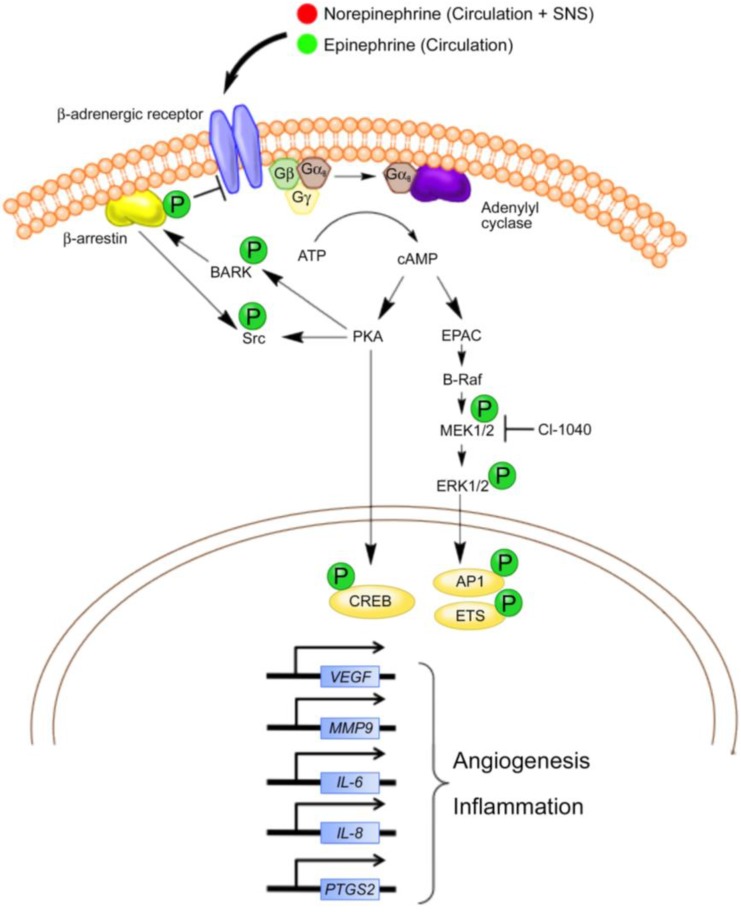Figure 1.
Summary of potential beta adrenergic signaling pathways in canine hemangiosarcoma and human angiosarcoma. Although several other pathways and transcription factors are regulated through beta adrenergic signaling, pathways currently described or thought to be active in hemangiosarcoma and angiosarcoma cells are presented. Norepinephrine and epinephrine are delivered into the tumor microenvironment through the circulation and potentially from local sympathetic nerve fibers. The catecholamines bind to β-ARs, causing Gαs-mediated activation of adenylyl cyclase and the generation of cAMP from ATP. Intracellular cAMP activates two major biochemical signaling pathways (1) protein kinase A (PKA) and (2) exchange protein activated by adenylyl cyclase (EPAC). Activation of PKA leads to the phosphorylation of multiple protein targets, such as transcription factors (e.g., CREB) and the beta adrenergic receptor kinase (BARK). BARK recruits β-arrestin, which inhibits beta adrenergic signaling and activates Src kinase. Although not shown, Src kinase is known to activate other transcription factors (e.g., STAT3) and the downstream focal adhesion kinase (FAK) in other cancers. The activation of EPAC leads to the activation of the B-Raf/ mitogen-activated protein kinase (MAPK) signaling pathway and affects the AP1 and Ets family of transcription factors. In general, the transcriptional responses potentially attributed to β-AR activation in angiosarcomas and hemangiosarcomas include the upregulation of genes involved in angiogenesis and inflammation. Adapted with permission from [57].

